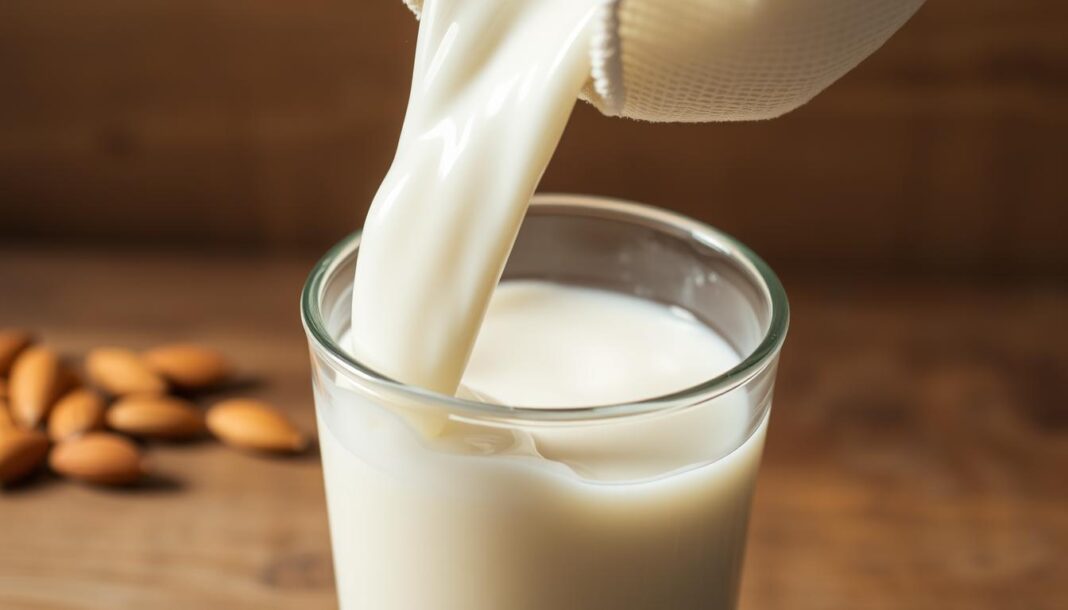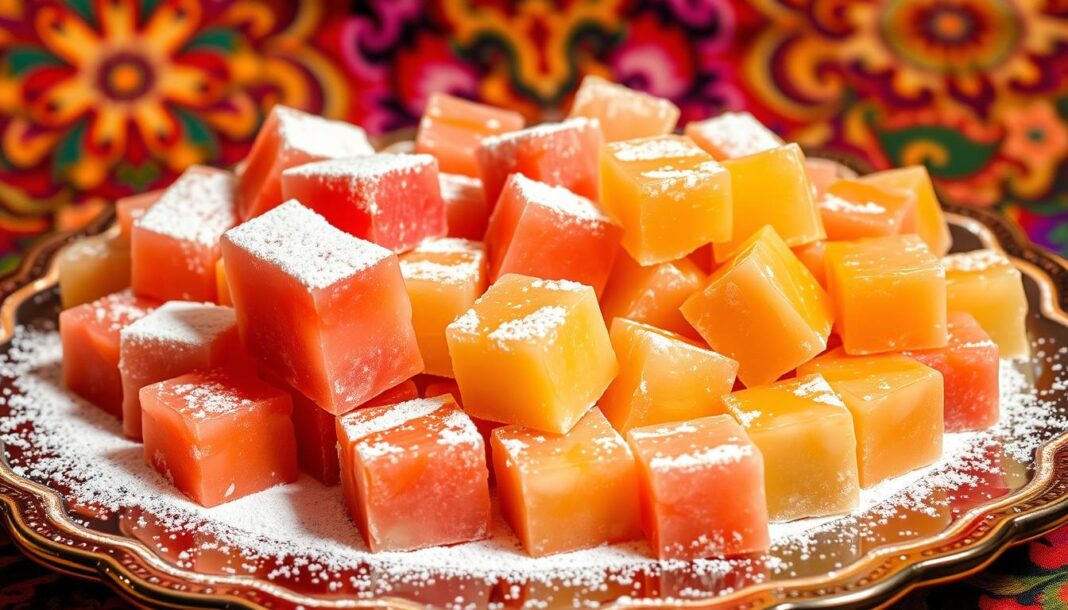Making almond milk at home is a simple process that has gained popularity among health-conscious individuals. For centuries, almond milk has been a staple in various cuisines, offering a delicious and nutritious alternative to traditional milk.
Our method involves just two main ingredients: almonds and water. By blending these together and straining the mixture, you can create a creamy and refreshing beverage that’s rich in nutrients. Unlike store-bought versions, homemade almond milk allows you to control the ingredients and customize the flavor to your liking.
In this comprehensive guide, we’ll walk you through our expert method for making the creamiest and most flavorful almond milk possible. Whether you’re a seasoned food enthusiast or just starting to explore the world of plant-based milks, you’ll learn the tips and tricks for creating a delicious and healthy beverage at home.
The Benefits of Homemade Almond Milk
Homemade almond milk offers numerous benefits that make it a superior choice to commercial almond milk. By making it yourself, you can avoid additives, preservatives, and stabilizers commonly found in store-bought versions.
Why Make Your Own Almond Milk?
Making your own almond milk allows you to control the ingredients and sweetness level, avoiding added sugars. It’s also cost-effective, especially when buying almonds in bulk. Additionally, freshly made almond milk has a creamier texture and more pronounced almond flavor compared to commercial versions.
Nutritional Value of Fresh Almond Milk
Freshly made almond milk is rich in nutrients, with approximately 207 calories, 17.8g of fat, and 7.6g of protein per serving (based on 4 servings). It’s also a good source of vitamin E, magnesium, and calcium. With its low calorie content and absence of cholesterol, homemade almond milk is a healthier alternative to traditional milk.

What You’ll Need to Make Almond Milk
To successfully make almond milk, you’ll need a few simple ingredients and some basic kitchen equipment. Making almond milk at home is a straightforward process that requires minimal ingredients and tools.
Essential Ingredients
The primary ingredients needed to make almond milk are raw almonds and water. We recommend starting with a ratio of 1 cup of almonds to 2 cups of water. This ratio yields a milk that is roughly the consistency of 2% milk. You may also want to add a sweetener like honey or agave to taste. The quality of the almonds is crucial, so we suggest using high-quality, raw almonds for the best flavor.
- Raw almonds
- Water
- Optional: sweeteners (honey, maple syrup, agave), salt, and flavorings (vanilla extract, cinnamon)
Required Equipment
To make almond milk, you’ll need a few pieces of equipment. A blender or food processor is necessary for breaking down the almonds. You’ll also need a strainer or a fine-mesh nut bag/cheesecloth to strain the mixture. Additional helpful tools include bowls, a measuring cup, and glass storage containers.

- Blender or food processor
- Nut milk bag, fine-mesh strainer, or cheesecloth
- Bowls, measuring cup, and glass storage containers
Preparing Your Almonds: The Soaking Process
The soaking process is where the magic begins in creating your homemade almond milk. Soaking almonds is crucial as it softens them, making them easier to blend and increasing the milk yield.
How Long to Soak Almonds
To soak almonds, place them in a bowl and cover them with about an inch of water. Let them stand on the counter, covered with a cloth, overnight, or refrigerate for up to 2 days. The longer the almonds soak, the creamier the almond milk will be, with a minimum of 8 hours recommended.
Proper Draining and Rinsing Techniques
After soaking, drain the almonds from their soaking water and rinse them thoroughly under cool running water. The almonds should feel a little squishy when pinched. Discard the soaking water as it contains phytic acid, which can inhibit nutrient absorption.
How to Milk an Almond: Step-by-Step Process
Extracting almond milk is a simple process that involves blending, straining, and squeezing. We start by combining soaked almonds with fresh water in a blender or food processor.
Blending Almonds with Water
Place the almonds in the blender, cover them with 2 cups of water, and blend at the highest speed for 2 minutes. We recommend pulsing the blender a few times initially to break up the almonds, then blending continuously. The mixture should result in a fine almond meal and white, opaque milk.
Straining the Mixture
Line a fine-mesh strainer with either a nut milk bag or cheesecloth, and place it over a measuring cup. Pour the almond mixture into the strainer. This step is crucial for separating the almond milk from the meal.
Extracting Maximum Milk from Almond Meal
Gather the edges of the nut bag or cheesecloth around the almond meal and twist to close. Squeeze and press with clean hands to extract as much milk as possible. Proper hand positioning and pressure are key to maximizing the yield.
Customizing Your Almond Milk
Now that you’ve made your almond milk, it’s time to make it your own. Customization allows you to tailor the taste, consistency, and overall experience to your liking.
Sweeteners and Flavor Additions
You can enhance the flavor of your almond milk by adding natural sweeteners like dates, maple syrup, or honey. For added depth, consider incorporating flavor enhancers such as vanilla extract, almond extract, or a pinch of salt. These additions can elevate the taste and create a more complex profile.
| Sweetener | Flavor Profile |
|---|---|
| Dates | Rich, caramel-like sweetness |
| Maple Syrup | Mild, earthy sweetness |
| Honey | Distinct, floral sweetness |
Adjusting Consistency and Creaminess
The consistency of your almond milk can be adjusted by changing the water-to-almond ratio. For a creamier milk, use fewer cups of water, and for a lighter version, add more water. You can also create barista-quality almond milk by adjusting the fat content and adding stabilizers, making it perfect for coffee drinks.
Conclusion: Storage Tips and Using Leftover Almond Meal
Now that you’ve mastered the art of making almond milk, let’s explore how to store it and utilize the leftover almond meal effectively. To keep your homemade almond milk fresh, store it in sealed containers in the fridge for up to 2 days. When it comes to the leftover almond meal, you can add it to oatmeal, smoothies, or muffins. Alternatively, spread it out on a baking sheet and dry it in a low oven (2 to 3 hours) to use in baked goods like cookies or as a crunchy topping.
By doing so, you’ll not only reduce waste but also benefit from the nutritional value of the almond meal. We encourage you to experiment with your own almond milk variations and explore the environmental and health benefits of making your own plant-based milk at home.


